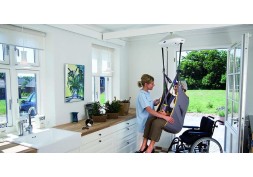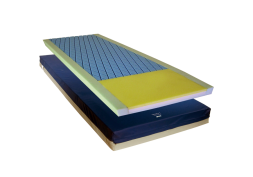How to choose the correct pressure care system for a patient.

Pressure care assessment guide for individual patients. This guide will help with the assessment of each individual patient's pressure need and the correct course of action when determining what pressure care equipment and treatment is required for them.
Choosing the correct pressure care products for a patient is a crucial process that requires careful consideration of the individual's specific needs and risk factors. Here are the steps to guide you in making the right selection:
Conduct a Comprehensive Assessment:
Begin by conducting a thorough assessment of the patient's medical history, mobility, skin condition, nutritional status, and overall health. Identify any risk factors that may contribute to the development of pressure ulcers, such as immobility, incontinence, malnutrition, or chronic medical conditions.
Consider the patient's weight, size, and body shape, as these factors will influence the appropriate pressure care product.
Involve a Multidisciplinary Team:
Include healthcare professionals from various disciplines, such as nurses, physicians, physical therapists, occupational therapists, and dietitians, to ensure a comprehensive evaluation of the patient's needs.
Determine the Level of Risk:
Use a validated risk assessment tool, such as the Waterlow score or Braden Scale, to determine the patient's risk of developing pressure ulcers. This assessment will help guide the selection of the appropriate pressure care product.
Match Products to Individual Needs:
Consider the patient's specific needs when choosing pressure care products. For example:
For patients at low risk: A static foam mattress or cushion may be sufficient to provide comfort and support.
For patients at moderate risk: Consider pressure redistributing foam mattresses or cushions with higher density and better contouring capabilities.
For patients at high or very high risk:
Advanced pressure care products such as alternating pressure mattresses, low air loss mattresses, or hybrid systems that combine different technologies may be necessary.
Evaluate Mobility and Activity Level:
Assess the patient's mobility and activity level. For patients who are immobile or have limited mobility, pressure care products that offer dynamic pressure redistribution (e.g., alternating pressure mattresses) may be more appropriate.
For patients with better mobility, pressure-relieving cushions or overlays for specific seating areas may be sufficient.
Consider Skin Condition and Sensitivity:
Examine the patient's skin condition for any signs of redness, existing pressure ulcers, or skin sensitivity.
Choose pressure care products with appropriate materials that are gentle on the skin and minimize the risk of friction and shear forces.
Test and Trial:
Whenever possible, allow the patient to test the pressure care product before making a final decision. This trial period can help ensure that the product is comfortable, suitable, and effective in meeting the patient's needs.
Educate and Train Caregivers:
Provide proper training to carers, including family members and healthcare staff, on how to use and maintain the selected pressure care products correctly. Ensure they understand the importance of regular repositioning, skin inspections, and proper cleaning of the products.
Review and Monitor:
Regularly review the effectiveness of the chosen pressure care products. If the patient's condition changes or their risk level evolves, reevaluate the selection to ensure it remains appropriate.
By following these steps and involving a multidisciplinary approach, healthcare professionals can make informed decisions when choosing pressure care products that effectively meet the individual needs of each patient and reduce the risk of pressure ulcers.


